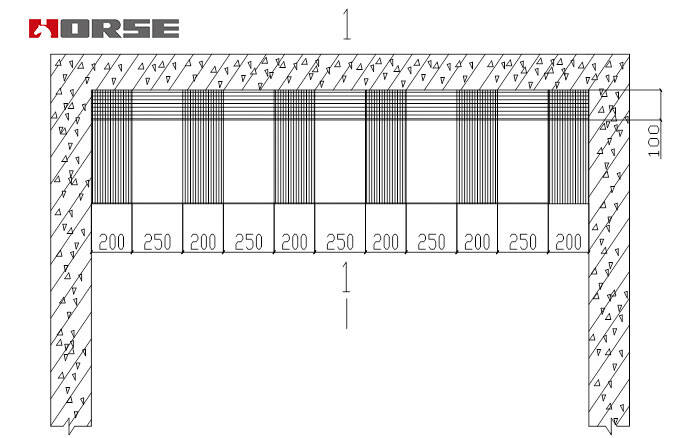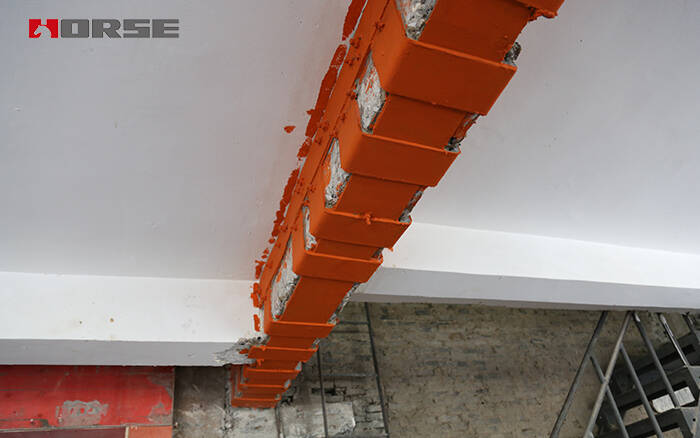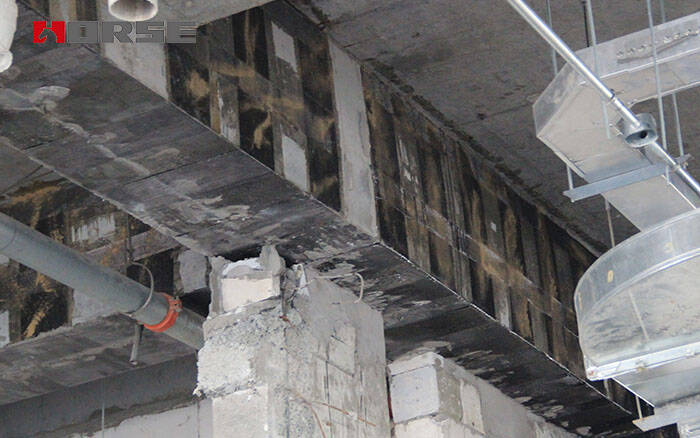Solutions
Horse Construction offers full range of structural strengthening materials with technical supports, documentation supports, products supports, project supports.
Carbon Fiber Vs Steel Plate: Who Does It Better?

In structural reinforcement, pasting carbon fiber sheet and pasting steel plates are two commonly used methods in concrete structures. In the selection of reinforcement schemes, both methods often appear simultaneously. From the perspective of the mechanism of action, both reinforcement methods are formed as a whole through structural adhesive and concrete substrate, jointly subjected to force, and the construction technology of the two is also relatively similar, often causing certain obstacles to the selection of methods.
In fact, the similarity in reinforcement mechanisms does not mean that the two can be chosen arbitrarily. The difference in mechanical properties between carbon fiber sheet and steel plate results in their different performance in reinforcement. The main difference is that we conduct comparative analysis by reinforcing the bottom of the beam.

Comparison of crack propagation
Whether it is pasting carbon fiber sheet or pasting steel plates, as the load increases, the concrete in the tensile zone at the bottom of the beam will crack, and when there are old cracks in the substrate, cracking is likely to occur first at the old cracks. Due to the limitation of the number of layers of carbon fiber sheet, the thickness will not exceed 0.7mm, while the steel plate used for manual adhesive construction can reach a thickness of 5mm. Under the same width, the cross-sectional area of the steel plate is much larger than that of the carbon fiber sheet. Therefore, when cracks appear, the load borne by the beam reinforced with adhesive steel is much higher than that of the beam reinforced with carbon sheet.
From the perspective of the number of main cracks, as the load continues to increase, steel reinforcement is more common than carbon fiber sheet reinforcement, and the expansion and extension speed of cracks in carbon sheet reinforcement is relatively slow. Carbon fiber sheet is more effective in limiting cracks, and it is more suitable to use carbon fiber sheet in crack resistance reinforcement.
Comparison of deflection deformation
The deflection change is mainly related to the bending stiffness of the beam. In structural reinforcement, pasting carbon sheet or pasting steel plate both improve stiffness through two aspects. Firstly, the elastic modulus of carbon fiber sheet is relatively close to that of steel plate, so the improvement of stiffness mainly depends on the cross-sectional area. In the comparison of cracks, it can be seen that the cross-sectional area of carbon fiber sheet is much smaller than that of steel plate, so the improvement of beam stiffness by steel plate is much higher than that of carbon fiber sheet.
On the other hand, the original stiffness of the beam can be maintained from the perspective of restricting crack development. In this regard, carbon fiber sheet reinforcement has a higher limiting effect on cracks, thus better maintaining the stiffness of the beam. However, from a combination of two aspects, increasing the cross-sectional area to enhance stiffness is much more effective than limiting cracks to maintain stiffness. Specifically, the deflection change of the beam in bonded steel reinforcement is slower than that of bonded carbon sheet, and the failure load of bonded steel reinforcement is higher. That is to say, adhesive steel reinforcement is more effective in improving the stiffness and bending resistance of beams.

Comparison of Durability
Durability performance affects the long-term reinforcement effect of the structure. From a material perspective, steel plates have poor durability and are prone to rusting. However, in structural reinforcement, the thickness of the steel plate is relatively thin, which can significantly weaken the cross-section or cause peeling damage when rusted. The durability of carbon fiber sheet is much better than that of steel plate, but direct exposure to sunlight and harmful media should be avoided. In addition, structural adhesive has an impact on the durability of both reinforcement methods. Overall, carbon fiber sheet reinforcement has better durability.
From the above comparison, we can find that although the two methods of carbon fiber sheet reinforcement and adhesive steel reinforcement may seem similar, their applicability varies in different reinforcement tendencies. In actual scheme selection, appropriate construction techniques should be selected based on the actual reinforcement needs on site.
You can find anything here you are in need of, have a trust trying on these products, you will find the big difference after that.

High strength, unidirectional carbon fiber wrap pre-saturated to form a carbon fiber reinforced polymer (CFRP) wrap used to strengthen structural concrete elements.

Two-component epoxy modified epoxy structural strengthening adhesive for bonded steel plate to concrete

High strength, unidirectional carbon fiber sheet pre-saturated to form a carbon fiber reinforced polymer (CFRP) sheet used to strengthen structural concrete elements.